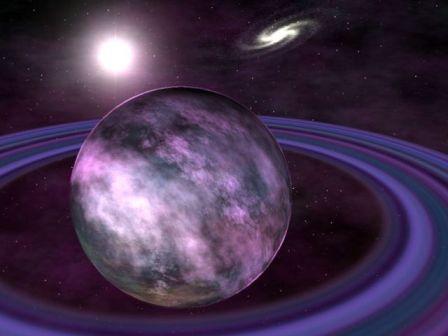Astronomers have discovered a new way to redefine the mass of planets in the solar system.
A group of international astronomers chaired by CSIRO (Commonwealth Scientific and Industrial Research Organization) have found a new way to redefine the masses. the planet in the solar system, using the impartial signals from small rotating stars called pulsars.
The team leader, Dr. David Champion, Germany's Max Plank Radio Astronomical Institute, said: 'This is the first time people can weigh the whole system, including planets, satellites and encircling rings. around those planets. We have come up with an independent test of previous results and this method has been evaluated as a great success of Science ' .

The mass of planets in the solar system can be calculated exactly by one
new method.
New measurements of planetary mass by new methods will be needed for future space exploration.
Until now, astronomers often 'weighed' a planet by determining the orbits of satellites or of spacecraft when flying over that planet. According to the Law of Mass Effect, the planet causes a gravity to act on an object that falls into its attraction, determining its orbit as it travels around it.
The new method is based on the correction of signals from pulsars emitted through regular "blips . blips" of radio waves. When the Earth flies around the sun, the signals from pulsar will change as the Earth orbits the Sun. To eliminate side effects, astronomers calculate when the pulses reach the center of the solar system, based on the orbits of the planets.
Because the arrangement of planets around the Sun is always changing, the focus of the whole system also changes. To find out where it is, astronomers use a table, called the ephemeris, to indicate the positions of planets at a given time and their mass values previously measured. .
CSIRO researcher TS Dick Manchester said, if these figures are only a bit wrong, and the position of the focus of the system is also a bit wrong, then these errors will show up in data from pulsars, and one can look at it to correct it.
'If the masses of Jupiter and its satellites are wrong, then we will find out as soon as we look at the data containing those errors repeated over 12 years, the time when Jupiter turns around. around the Sun '. - Dr. Manchester for example - 'When we correct the mass of Jupiter and its satellites properly, time errors also disappear immediately. On the same basis, we have 'weighed' the mass of planets' .

The mass of Jupiter is calculated according to the new method more accurately
when determining according to the old method.
Based on the 4 pulsar data, astronomers accurately weighed the masses of Glass (Mercury), Venus (Venus), Mars (Mars), Jupiter (Jupiter) and Saturn (Saturn ) along with the satellites and belts of these planets. The data were recorded from Parkes telescopes in East Australia, Arecibo in Puerto Rico and Effelsberg in Germany.
The spacecraft involved in this determination showed that the mass of the Jovian system less than the Sun's mass was 9,547921 (2) x 10 -4 times, more accurate than mass. that Pioneer and Voyager ships determine by the old method.
The new measurement technique adjusted the difference in mass to two hundred thousand million tons, meaning corresponding to 0.003% of Earth's mass and one-millionth of the mass of Jupiter.
The research specialist in Astronomy and Space Science (CASS), of the CSIRO, is Dr. George Hobbs, in a short time, spacecraft continues to identify the mass the amount of many planets, but 'pulsar technology does not need to take ships to the place and measure not only the planets but their satellites' .
Lead researcher of 'Basic Physics in Radio Astronomy' of the Max-Planck Institute, Professor Michael Kramer, points out that astronomers need accurate time data because they are using pulsars to 'hunt' them. gravitational waves that Einstein's relativity theory predicted ' .
 Van Allen's belt and evidence that the Apollo 11 mission to the Moon was myth
Van Allen's belt and evidence that the Apollo 11 mission to the Moon was myth The levels of civilization in the universe (Kardashev scale)
The levels of civilization in the universe (Kardashev scale) Today Mars, the sun and the Earth are aligned
Today Mars, the sun and the Earth are aligned The Amazon owner announced a secret plan to build a space base for thousands of people
The Amazon owner announced a secret plan to build a space base for thousands of people